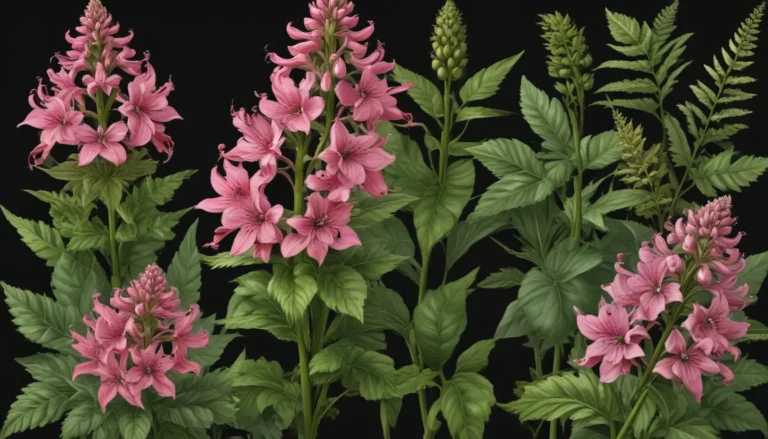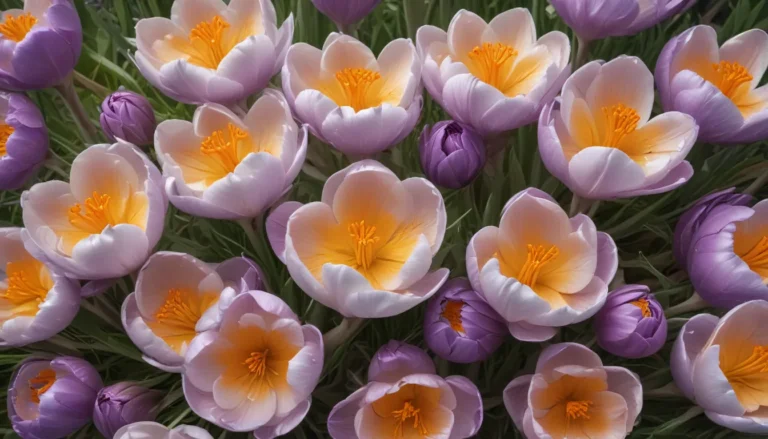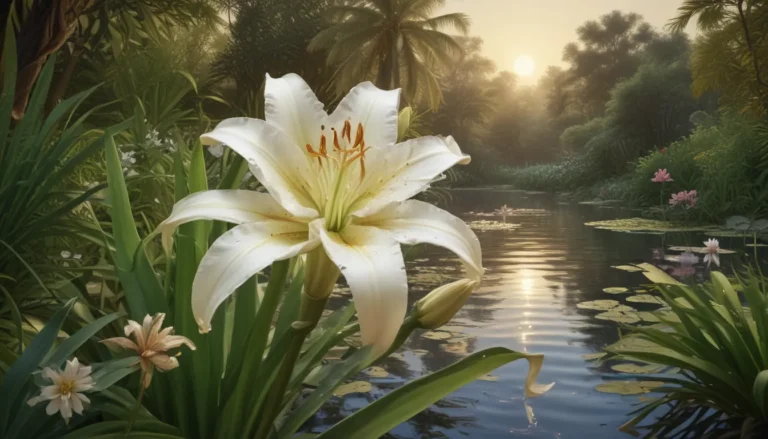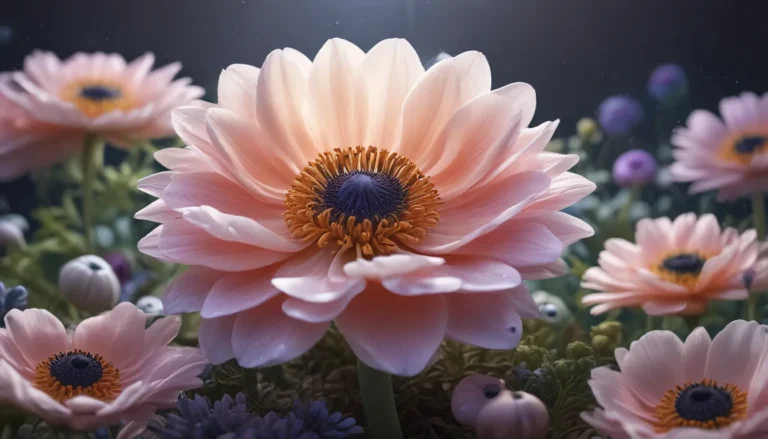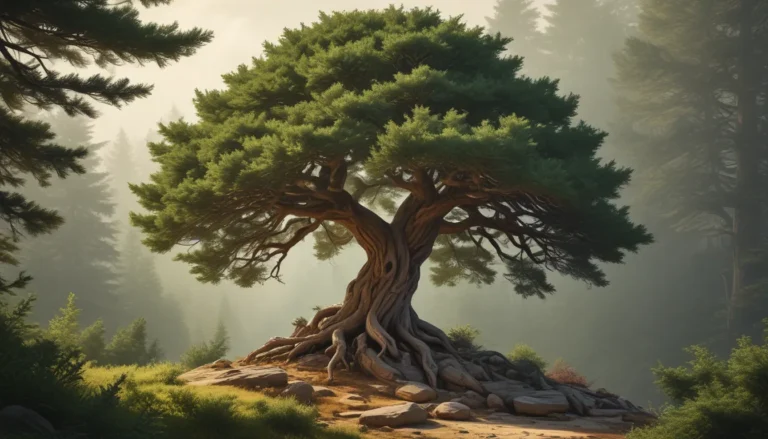The pictures we use in our articles might not show exactly what the words say. We choose these pictures to make you interested in reading more. The pictures work together with the words but don’t take their place. The words still tell you the important facts.
Bluebonnets, the pride of Texas, are not just ordinary flowers; they hold a special place in the hearts of many. Known for their vibrant blue petals and symbolizing resilience and beauty, bluebonnets, scientifically known as Lupinus texensis, grace the Texan landscape during the spring season, turning it into a breathtaking sea of blue.
Unveiling the Beauty and Significance of Bluebonnets
Let's delve into 19 extraordinary facts about bluebonnets that will deepen your appreciation for these fascinating flowers. From their historical significance to their unique characteristics, you'll discover what makes bluebonnets so special and cherished by Texans and nature enthusiasts worldwide.
Bluebonnet: The Iconic State Flower of Texas
Bluebonnet, also referred to as Lupinus texensis, proudly holds the title of the official state flower of Texas. Its stunning blue petals make it a beloved symbol of the Lone Star State.
Bluebonnets: Springtime Beauties
These enchanting flowers bloom from late March to early May, adorning the Texan countryside with hues of blue, white, and occasionally pink. The sight is truly mesmerizing!
Bluebonnets: Nature’s Pollinator Magnets
Not only pleasing to the human eye, bluebonnets also attract important pollinators like bees and butterflies, playing a crucial role in supporting local ecosystems.
A Sweet Scent of Bluebonnets
The delightful fragrance of blooming bluebonnets lingers in the air, adding a sweet and refreshing touch to the overall experience of encountering these flowers.
Bluebonnets: Legumes with Benefits
Belonging to the legume family, Fabaceae, bluebonnets possess nitrogen-fixing properties that benefit the soil, making them a valuable addition to any ecosystem.
Bluebonnets in Native American Medicine
Native American tribes in Texas historically used bluebonnets for medicinal purposes, believing in their healing properties to alleviate various ailments and promote wellness.
Bluebonnets: Master of Self-Pollination
Bluebonnets have the unique ability to self-pollinate, producing seeds without the need for cross-pollination, showcasing their self-sufficiency.
Bluebonnets: Survivors of Drought
Adapting to the hot and arid climate of Texas, bluebonnets exhibit remarkable resilience, surviving drought conditions with their deep root systems and water conservation abilities.
Bluebonnets: a Photographer’s Delight
With their striking colors and picturesque landscapes, bluebonnets have become a popular subject for photographers, attracting many to capture the beauty of these iconic flowers.
Symbolism of Bluebonnets
Bluebonnets are often seen as symbols of renewal, hope, and the enduring spirit of Texas, embodying beauty and resilience in challenging environments.
Bluebonnets’ Unique Petal Formation
Bluebonnet flowers typically feature five petals arranged in a distinct shape, forming a hood-like structure that opens up to reveal a burst of vibrant color.
Towering Bluebonnets
Some bluebonnet varieties can reach impressive heights of up to two feet, creating a stunning visual display that stretches towards the sky.
Annual Cycle of Bluebonnets
Considered annual plants, bluebonnets complete their life cycle within a year, germinating, growing, flowering, producing seeds, and then regenerating in the following year.
Dormancy of Bluebonnet Seeds
Bluebonnet seeds have a unique dormancy mechanism, remaining dormant in the soil for years until the conditions are right for germination and blooming.
Bluebonnets Inspiring Artistic Expression
Artists, writers, and musicians have been captivated by the beauty of bluebonnets for centuries, influencing numerous works in various mediums.
Bluebonnets in Texas Traditions
Integral to Texas culture and traditions, bluebonnets feature prominently in annual festivals and family photo sessions, holding a special place in the hearts of Texans.
Bring Bluebonnets to Your Garden
Bluebonnet seeds are readily available for purchase, allowing you to cultivate these stunning flowers in your own garden and experience the beauty of Texas at home.
Bluebonnets’ Crossbreeding Abilities
Bluebonnets can hybridize with other Lupinus species, leading to unique and unpredictable variations in flower color and characteristics.
Bluebonnets: Pride of Texans
Mention of bluebonnets evokes a sense of pride and nostalgia in Texans, symbolizing the beauty of the Texan landscape and its enduring spirit.
Conclusion: Embracing the Wonders of Bluebonnets
Bluebonnets are truly exquisite flowers that captivate nature enthusiasts worldwide. Their vibrant blue color, unique traits, and ecological contributions make them a cherished symbol of Texas. Whether admiring their beauty or exploring their adaptations, bluebonnets offer a wealth of wonder to behold.
FAQs
-
What is the meaning behind the name “Bluebonnet”?
The name “Bluebonnet” refers to the shape of these flowers, resembling bonnets worn by pioneer women. -
Are bluebonnets only found in Texas?
While primarily found in Texas, bluebonnets can also be spotted in other parts of the United States, such as Oklahoma and Louisiana. -
How do bluebonnets benefit the ecosystem?
With deep roots that prevent soil erosion and improve soil quality, bluebonnets also provide habitat and food for insects, birds, and wildlife. -
When is the best time to see bluebonnets in bloom?
The peak bloom of bluebonnets typically occurs in the spring, from late March to early May, based on weather conditions. -
Can bluebonnets be grown in home gardens?
Yes, bluebonnets can thrive in home gardens with attention to specific soil and temperature requirements for optimal growth.
Bluebonnets beckon you to uncover their enigmatic allure and mindblowing details, transcending their extraordinary facts. Dive into the world of Texas' beloved flower, enriched with fascinating discoveries that will leave you in awe.


